The lines on a soccer field are one of the most important components of the game, despite being so often ignored. Without the markings on the field, we would not be able to understand what is happening on the field, if a player committed a foul, who deserves the win, and overall to enjoy the game. But what are all the markings on the soccer field? How are they called and what is their role in the game? Let’s kick it off and find out!
TURF TANK PRO TIP:
Did you know there is a line marking robot that could paint all the markings on a soccer field without a manual operator? The Turf Tank robot can paint an 11v11 soccer field in under 25 minutes all by itself, according to the rules and regulations, so you never have to worry about the markings.
Touchlines
The touchlines are the two long lines running the length of the field, and are placed at an equal distance from each other on either side. They define the boundary of the field of play and show the inbounds area where the ball must stay throughout the match. If it goes out of bounds, then a throw-in is awarded to the team that did not touch the ball last.
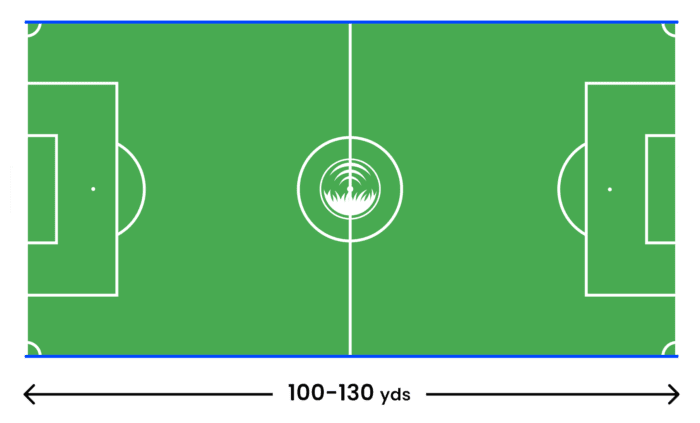
The touchlines are usually between 100 and 130 yards long for standard soccer game and between 110 to 120 yards long for international matches.
Goal lines
The goal lines are two short lines at each end of the field, perpendicular to the touchlines and together they form the boundary. They are placed equidistant from the corner flags and define the inbounds area of the field.
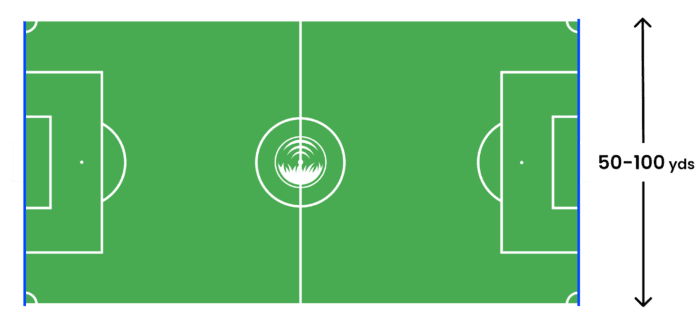
For standard games, the goal lines can be anywhere between 50 to 100 yards long, while for international games the dimension is 70-80 yards.
Center line
The center line is a long, single line running down the middle of the field and it bisects the field of play. It is also known as the halfway line because, well, it’s placed at the exact middle of the field! This line has several functions: to restart the game after a goal has been scored, to help place the ball on kicks offs, and also serves as a boundary for players. For example, during a kick-off, all the players must be on their own half of the field and not go past the center line until the ball is kicked.
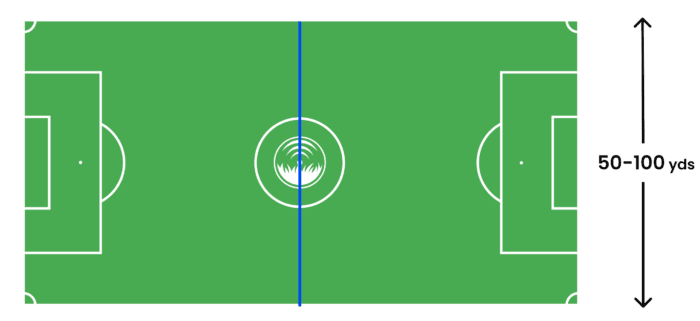
The halfway line has the same dimension as the touchlines to which it is parallel, so it is between 50 to 100 yards.
Center circle
The center circle is located in the middle of the field, with its center point on the halfway line. It has a radius of 10 yards and is used only for kick-offs at the start of each half and after a goal is scored. At a kick-off, the ball is placed on the center mark inside the circle, and all players from the opposing team must stay outside the circle until the ball is in play.
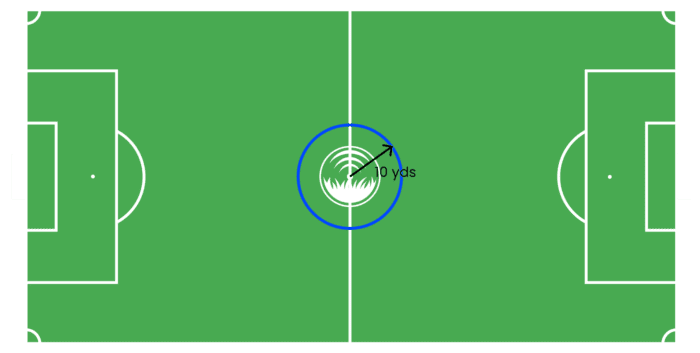
The midfield is typically marked with a circle that has a radius of 10 yards.
The Goal Box
This area is also known as the 6-yard box. It’s a predetermined area that is rectangular in shape and will extend six yards beyond the goalposts. Two parallel lines are drawn to the target area. The endline should be perpendicular to these two lines.
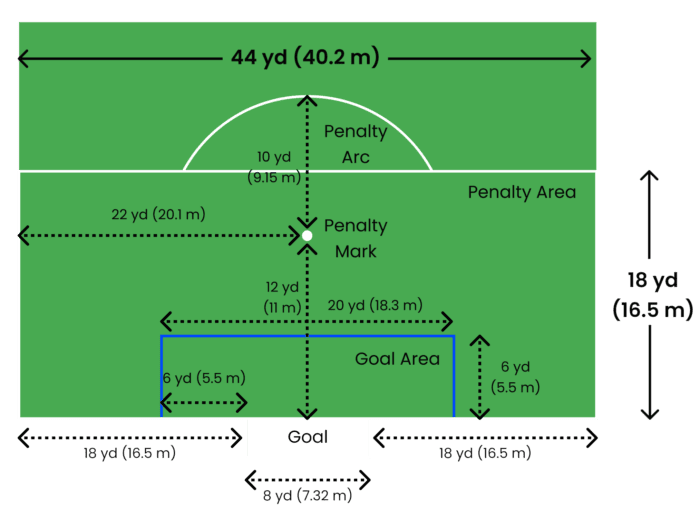
The Penalty Area
Often referred to as a penalty box or 18-yard box, it is based on the measurements of a soccer field, the penalty area is an area where two 18-yard-long parallel lines are drawn from the goal post. They will also be perpendicular to the endline. The penalty area encompasses the entire area that is enclosed by these lines.
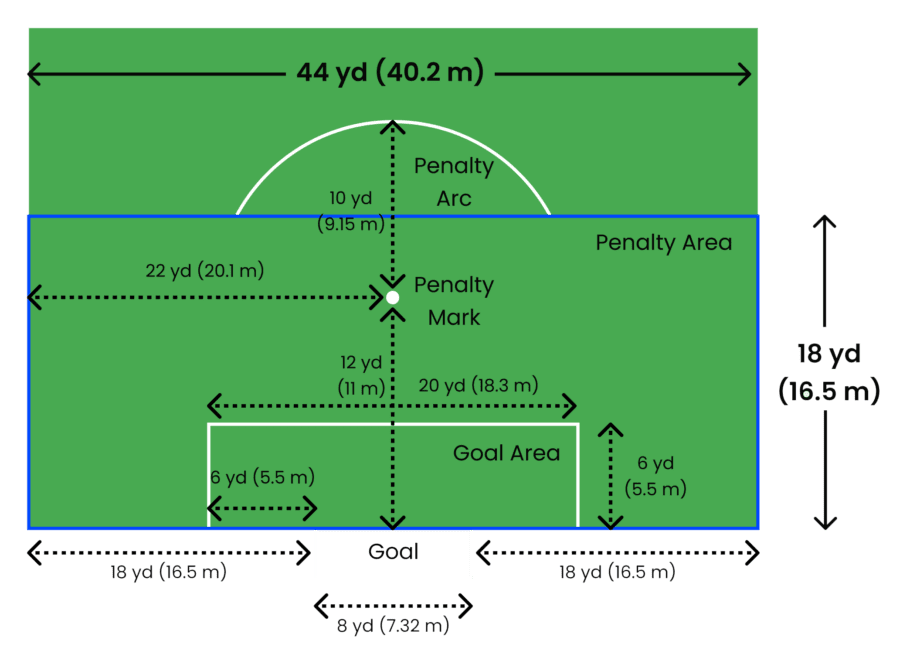
The Penalty Arc
This area outside the penalty box is a half-circle with a 10-yard radius. What is the point of a penalty arc? All other players must be a specific distance away from the player who takes the penalty kick. This distance is marked by the half-circle.
The Penalty Kick Mark
Also known as the penalty mark, this spot can be found on every soccer pitch. It’s pretty self-explanatory; it is a place where the player will take penalty kicks for major fouls in the penalty area. It’s usually measured out 12 yards from the center of the goal and spans 9 inches in diameter.
Curious to see how the robot paints a soccer field autonomously?




